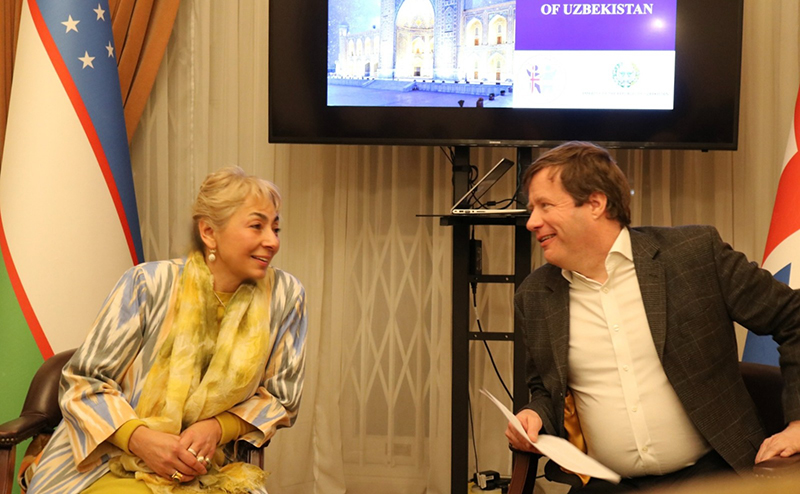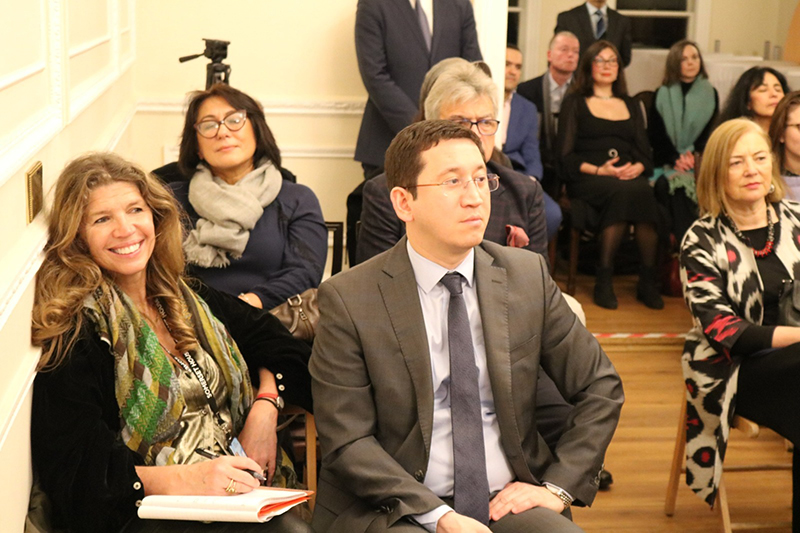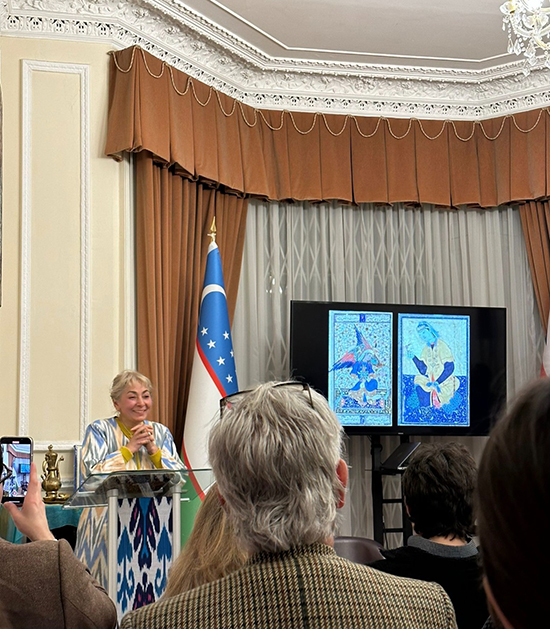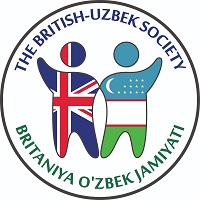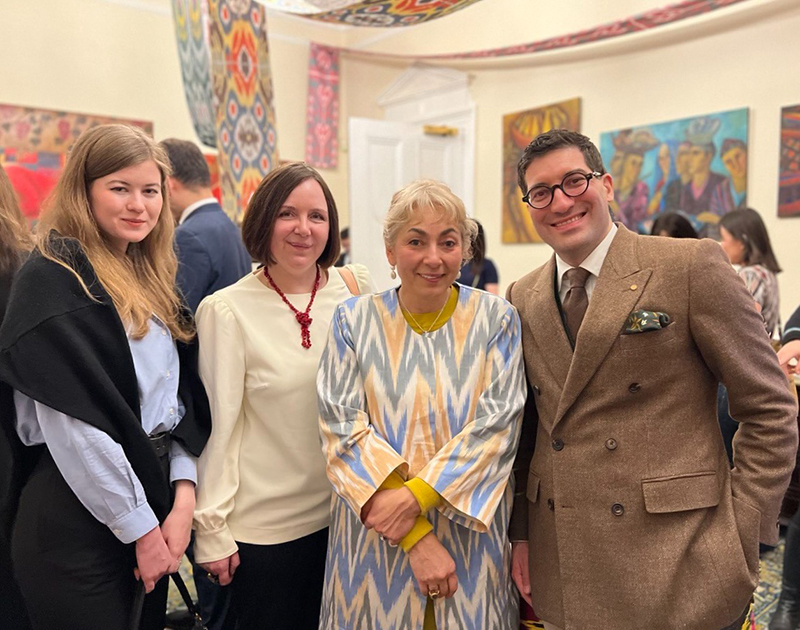Report on the talk by Dr Firuza Melville, Research Director of the Centre for Persian Studies, Pembroke College, University of Cambridge – 09/02/2023
The latest talk organised by BUS with the generous support of the Embassy was given by Dr Firuza Melville, Director of the Centre for Persian Studies, Pembroke College, University of Cambridge. It was extremely well-attended, there was even a waiting list created due to the great interest in the subject.
The presentation consisted of several parts. Dr Melville started with introducing the multimedia Project called ‘The Cultural Legacy of Uzbekistan in the World Collections’. She joined it from its very beginning when it was established in 2017 thanks to the initiative of Firdaws Abdukhalikov as the curator in charge of the British collections. However, initially she was approached to contribute to the Project as the author of the album dedicated to Central Asian art in the Fitzwilliam Museum and other Cambridge collections. The Project is truly international, with more than 50 important art museums and libraries from about 30 countries involved so far. By now about 60 volumes have been published already in the series.
The Project is truly multimedia as it has several dimensions, and the media responsible for the dissemination of the results of the work of so many experts around the world is the most prominent aspect. And these aspects are exceptionally varied in subjects and time – from history and archaeology to ethnography, music, film or the contemporary art of Uzbekistan.
So far two volumes on the UK collections have been published. The first is on the Fitzwilliam Museum, for which Dr Melville is both a contributor on the chapter about the arts of the book and the editor in chief. Apart from the preface by the director of the Museum Luke Syson, and Firuza Melville’s part dedicated to miniature painting from Mawarannahr and the reconstruction of the Manuk album, which is now dispersed but originally was supposedly commissioned for young grandson of Babur, newly enthroned emperor Akbar by his mother Hamida Banu Begum, the Fitzwilliam volume includes several other sections. Adrian Popesku, head of the Numismatic department at the Fitzwillam wrote on the coins from the Kushan, Bactrian and Soghdian periods up to the Khiva Khanate and Bukhara Emirate; ceramics from Samarqand by Melanie Gibson; textiles from Bukhara by Elmira Gyul, and Gandharan sculpture and Hellenistic jewellery by Wannaporn Rienjang.
The publication of the Fitzwilliam volume was accompanied by a full-scale documentary produced by Shahnoza Ganieva and her team, who came to Cambridge and filmed in the Museum and several colleges.
The other book is a joint effort of another group of scholars, covering the materials from the British Museum in London, the Ashmolean Museum in Oxford, and the Burrell’s collection in Glasgow.
The collections of the British Museum were presented by St John Simpson, who wrote about metal work from Bukhara; Ladan Akbarnia – about Timurid jades and particularly the cup that used to belong to Ulugh Bek; and Zeina Klink-Hoppe on ethnographic collections, which are mainly textiles and jewellery of the 19th-early 20th century from Kokand, Tashkent, Samarqand and Bukhara.
For the Ashmolean Museum it was Francesca Leoni who contributed a comprehensive chapter including objects in various media: early ceramics, calligraphy and textiles – mainly male and female chapans. For the Glasgow collection which came from Sir William Burrell, who was a Scottish shipping merchant and art collector – it was Nura al-Gaylani who wrote about this very impressive collection of suzanis (embroideries) from the Bukhara emirate of the mid-19th century.
In conclusion, Dr Melville expressed her hope that the British collections of Central Asian art, related to Uzbekistan to be given as much attention in the UK as they have just been enjoying in France, where two blockbuster exhibitions are having a great triumph bringing the public to the French museums and tourists to Uzbekistan: one in the Louvre called “The Splendours of Uzbekistan’s oasis”, and the other one “On the Road to Samarkand. Colours and Splendours of Uzbekistan” in the Institute of the Arab World.
During the Q&A, Dixie Stewart of SandStone Global film company asked about Dr Melville’s favourite object in the Fitzwilliam Museum. Firuza answered that she is more interested in the provenance of the objects rather than in the artefacts themselves. Every object has a story, like a mother’s album for her royal son commissioned 500 years ago, or a figurine of a Sogdian merchant which was made fourteen centuries ago out of a small piece of clay which one could find under one’s feet and which would not cost anything. However, now it is a museum treasure as it tells the story of the whole civilisation of ancient Samarqand, which was the blood and flesh of such a well-known phenomenon as the Silk Road – the main tourist attraction of nowadays.
Firuza’s talk was followed by a brief presentation by Scala’s Director of Business Development, Dr Neil Titman. In 2020 Scala Arts & Heritage Publishers, the UK’s leading producer of fine illustrated books for museums, galleries and other heritage institutions worldwide, embarked on a long-term collaboration with the Art & Culture Development Foundation (ACDF), under the Ministry of Culture of the Republic of Uzbekistan. The purpose of the relationship is to produce and distribute a wide range of books on Uzbek history and culture, raising awareness of Uzbekistan’s unique cultural heritage across the world. Neil gave a brief presentation of Scala’s activities to date on behalf of the ACDF, following Dr Firuza Melville’s talk on Central Asian Art.

